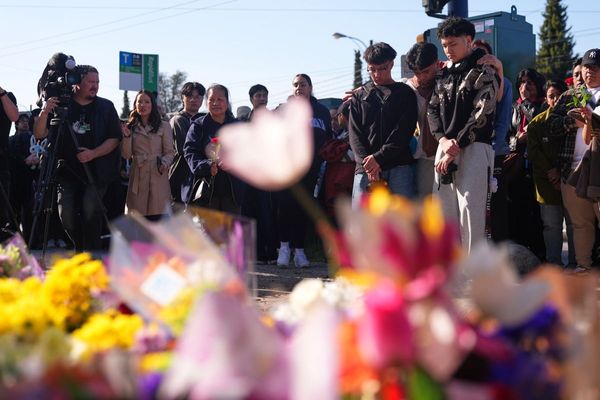
Australia is becoming an increasingly lonely place, so much so that one party is turning it into an election issue.
Social isolation affects one in 10 Australians, while one in six experience periods of emotional loneliness.
It is not a trivial problem. The health impacts of chronic social isolation have the same implications for heart disease and stroke as smoking 15 cigarettes a day, a UK study found.
Loneliness is linked to increased mental health issues, increased risk of chronic health issues such as diabetes, and even early death. Lonely people are more likely to go to the doctor, creating a healthcare burden akin to obesity. As the Australian population gets older, rates of social isolation are expected to increase.
In Victoria, one political party thinks the problem is so severe it requires government intervention. Fiona Patten, the upper house MP who founded the Australian Sex party in 2009 and changed its name to the Reason party in 2017, has proposed that Victoria introduce a minister for loneliness to work across health, infrastructure, justice and communities portfolios, and tackle what experts say is becoming a growing health problem.
The proposal has the support of the Australian Coalition to End Loneliness but has yet to be put to either major party.
The United Kingdom introduced a minister for loneliness in January.
Patten says appointing a designated minister would elevate the issue and help reduce stigma, as well as ensuring policymakers remain attuned to the impact of loneliness.
“While I have been in parliament, the notion of social isolation and the issue of social isolation has been raised in a number of areas, whether that was talking about in some cases even as extreme as talking about end of life choices through to looking at retirement housing, through to looking at even juvenile justice, where people have no community connection and this leads to negative outcomes,” she says.
A key part of the role, Patten says, would be utilising a growing body of research into the causes of entrenched loneliness.
Scarce public transport options, a lack of support for people with disabilities to engage in community events and satellite suburbs that force long commutes and leave little time for socialisation have all been identified as possible structural triggers.

“We know that everyone is at risk of loneliness in periods of life transition,” says Tegan Cruwys, a psychological research fellow at Australian National University.
“Whether that’s moving to university, becoming a mum, retiring from the workforce, changing jobs, moving cities. If you were someone who experienced loneliness during life transitions, that has less to do with you and much more to do with the world in which you are living.”
According to a report by Relationships Australia which analysed data from the Household, Income and Labour Dynamics in Australia (Hilda) survey, a longitudinal study of more than 17,000 people that has been running since 2001, the group with the highest rates of emotional loneliness are widowed, divorced or separated men aged between 45 and 64.
“Many men have their social connections through women, through their intimate partner’s networks,” says Relationships Australia national executive officer Alison Brook. “So when you suddenly lose a spouse, you lose the rest of that social contact.”
Alone, but not necessarily lonely
Kevin O’Neill is 56 and divorced in his early 40s. He says the transition from living with a wife and kids to living alone was tough.
“When the relationship first broke down I think I was quite lonely for a year or two, just because it was a big change in my life and I didn’t have those networks around me, the social or support networks,” he says.
Things improved when he moved back to Keilor in Melbourne’s northern suburbs and reconnected with friends he grew up with. Now he says he is so busy that living alone is a blessing; the one place where he does not have to consider anyone else.

O’Neill works full time as a construction manager. With retirement looming in the next decade or so, he has begun to cultivate hobbies such as photography and hiking to give him a creative and social outlet.
“Sometimes I worry about the future and the way social networks change as we get older, particularly when you are not working and people move away, friends who might have plans about where they want to move when they retire,” he says. “It does worry me a little bit that I won’t have that constant social interaction at a time when I could probably use it.
“But in the suburb that I live in I can walk out the door and be in a cafe and bump into someone I know within five minutes.”
Lucy Banks* took the opposite approach. Feeling oppressed by the staid pattern of her life in Melbourne, where she had lived for almost 10 years, she recently moved to Sydney.
“I have moved a fair bit so I knew it would be hard,” she says. “But I knew I needed a change and felt that change would push me to make other changes that I knew that I wanted and had never got around to because I was so comfortable in my routines.”
Now in her early 40s, Banks, who has moved cities more than half a dozen times in her adult life, says she feels less isolated now than she did in her 20s. According to Relationships Australia, among females, women aged 25-29 reported the highest rates of social isolation.
Like O’Neil, Banks says that work forms a large part of her routine. She says she does not actively worry about feeling isolated in retirement and intends to put some plans in place ahead of time to stay engaged and active in the community.
“It would be a difficult period for someone like myself, for sure,” she says.
Join a club, extend your life
Avril Hannah-Jones, a Uniting Church minister, is also contemplating the risks associated with that transition.
“At the moment the time I spend alone is by choice, and is a relaxation from a very people-oriented job,” she says. “Maybe in retirement, if being alone is no longer by choice, I’ll feel more lonely.”
Brook says retirees can protect against the health risks of loneliness by joining one or two community groups or volunteer communities.
“If you’re 65 and you retire and you just sort of potter around the house … your chances of dying within six years are 12% – that’s an early death,” she says. “If you retire at 65 and you join one interest group ... choir, knitting, woodworking, men’s shed, anything, your chances of dying in that six years has reduced by half.”
The risk of an early death decreases with every group or meaningful activity you join.
“I think that’s a really profoundly simple but profoundly powerful message of optimism about this issue.”
Cruwys says the social risk of retirement should be discussed and planned for as openly as the financial risks. There is a demonstrated connection between being financially strained, such as living on welfare or the pension, and an increased sense of isolation.
“Staying connected costs money,” she says.
*Some names have been changed.







